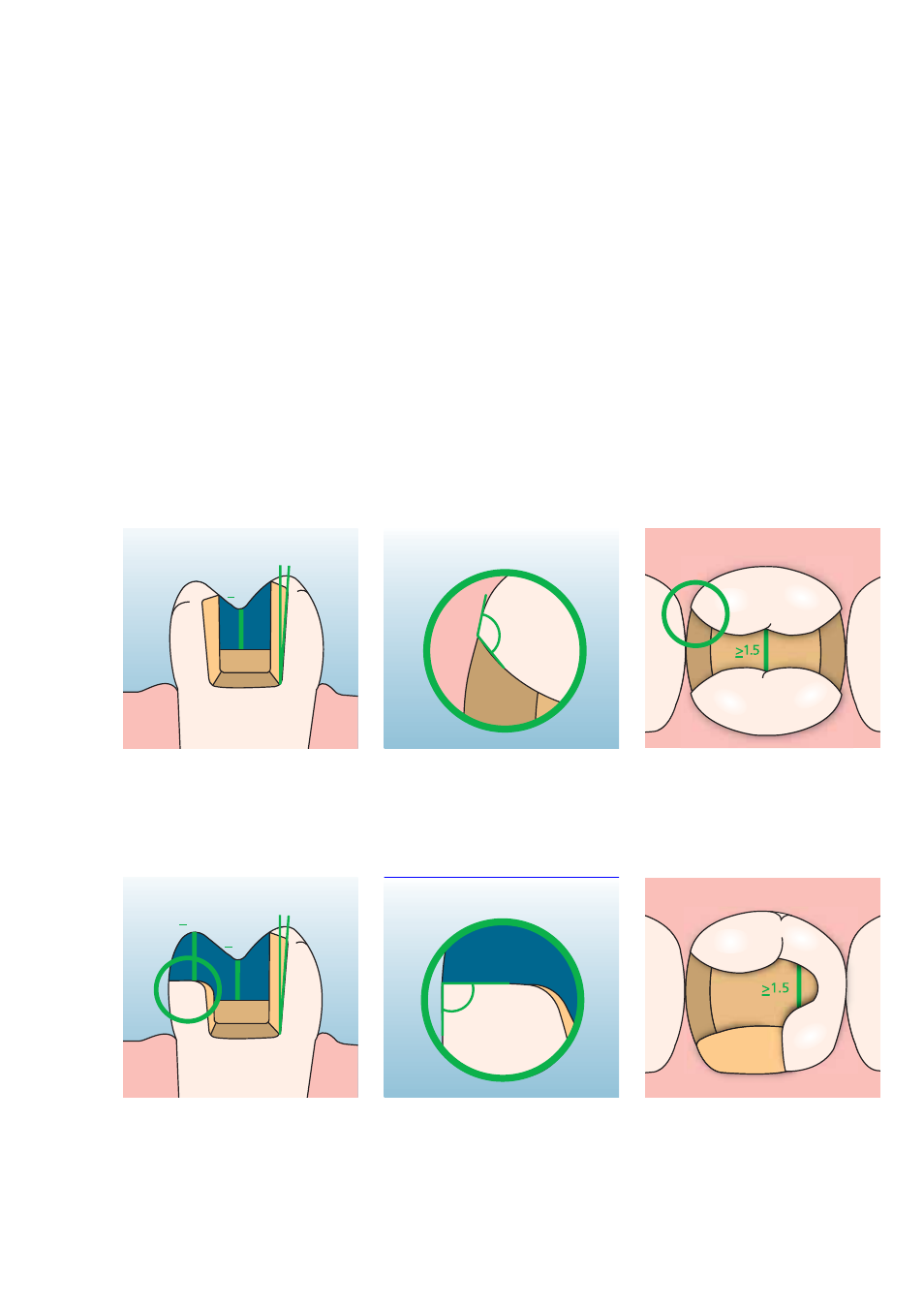Preparation guidelines and minimum thicknesses – Ivoclar Vivadent IPS Empress CAD Chairside - de-en-es-it-ru User Manual
Page 59

11
Preparation guidelines and minimum thicknesses
Successful results with IPS Empress CAD can only be achieved if the guidelines below and minimum layering thicknesses
are strictly observed. The following minimum thicknesses are required for IPS Empress CAD restorations.
Inlays and Onlays
Static and dynamic antagonist contacts must be taken into consideration. The preparation margins must not be located on
centric antagonist contacts.
A preparation depth of at least 1.5 mm and an isthmus width of at least 1.5 mm must be observed in the fissure area.
Prepare the proximal box with slightly diverging walls and observe an angle of 100–120° between the proximal cavity walls
and the prospective proximal inlay surfaces. For inlays with pronounced convex cavity walls without adequate support by
the proximal shoulder, marginal ridge contacts should be avoided. Round out internal edges in order to prevent stress
concentration within the ceramic material. Eliminate the proximal contacts on all sides. Do not prepare slice-cuts or feather
edges.
Provide at least 2 mm of space in the cusp areas. The shoulder must not show any inclinations, i.e. it must show a 90°
angle to the residual tooth structure. Onlays are indicated if the preparation margin is less than approximately 0.5 mm
away from the cusp tip, or if the enamel is severely undermined.
>1.5
4°
100-120°
>1.5
>1.5
>2.0
4°
90°
>1.5
